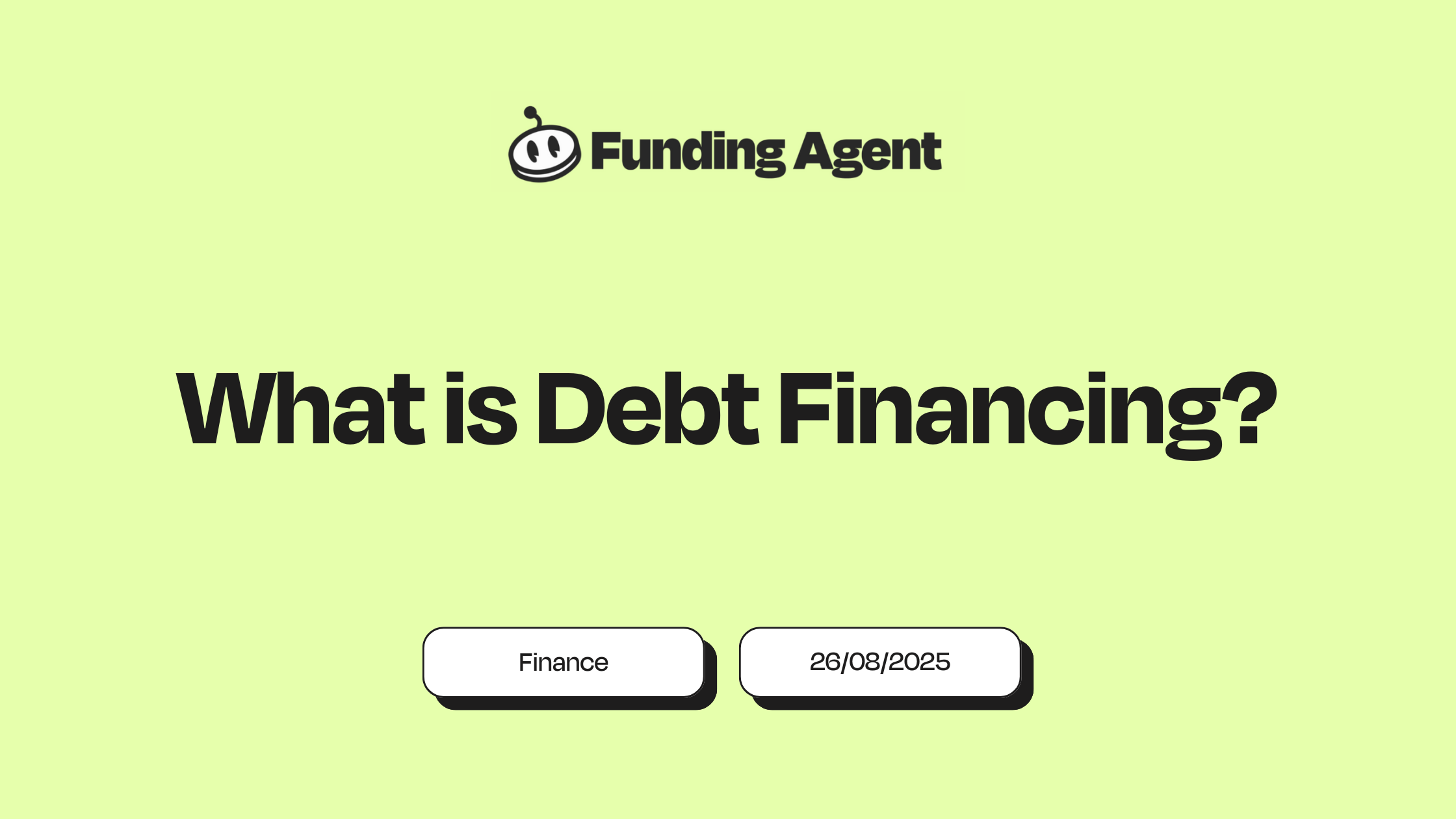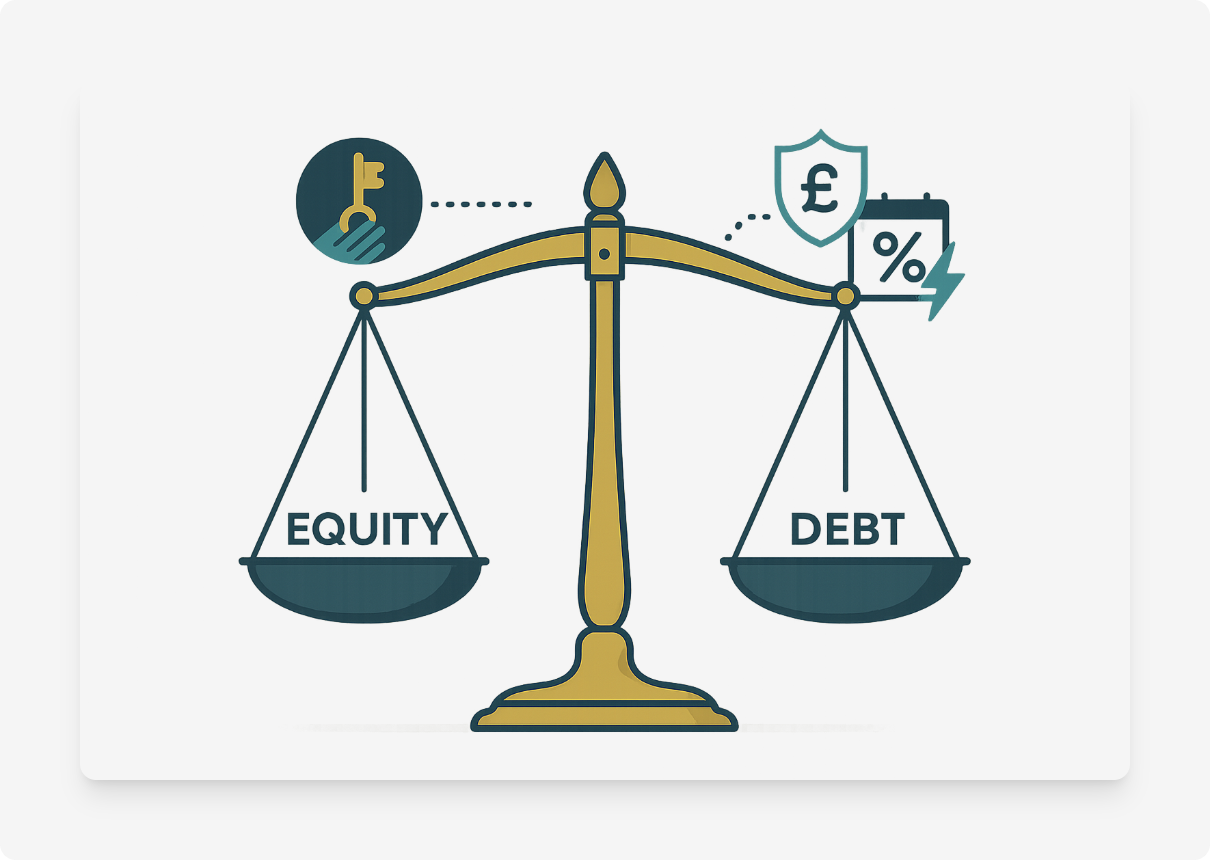


Debt Financing Explained: Smart Ways to Fund Your Business Without Giving Up Control


Debt financing gives you the money to grow without losing ownership. It's one of the most popular ways UK businesses raise capital, and for good reason. Whether you're launching a new product or covering payroll, understanding how debt financing works could unlock your next big move.
What Is Debt Financing and Why It Matters?
Debt financing means borrowing money that you’ll pay back over time, with interest. You get capital from a lender, like a bank or investor, without selling part of your business. This keeps you in control, but it also means you carry the obligation to repay the loan.
It’s often used for expansion, short-term cash flow, or big one-time costs. Unlike equity financing, it doesn’t involve giving away shares or dealing with investor oversight. But it does require careful planning and reliable cash flow.
Types of Debt Financing for UK SMEs
Not all loans are the same. Here are the most common types:
- Bank Loans: Lump-sum funding with regular repayments and interest. Often used for equipment or business expansion.
- Lines of Credit: Revolving credit for day-to-day cash flow. Think of it like a business credit card.
- Bonds: Companies issue bonds to investors, then repay with interest at maturity. This is more common with larger firms.
- Invoice Financing: Borrow against unpaid invoices to get cash quickly. Ideal for businesses with slow-paying clients.
- Mezzanine Capital: A hybrid between debt and equity, used for high-growth plans. It carries more risk, and higher cost.
Debt vs Equity: A Side-by-Side Comparison
For a deeper dive into equity options, check out our guide to equity finance.
See the full debt vs equity comparison for more.
Pros of Using Debt Financing
- Keep your equity: You stay in charge. No investor input or dilution.
- Tax relief: Interest payments reduce your taxable income.
- Clear terms: Fixed repayments help you plan cash flow.
- Speed: Options like invoice financing give fast access to working capital.
- Credit growth: Timely repayments boost your credit score, helping future funding.
The Risks and Downsides of Debt
- Repayment pressure: Payments are due even if business slows down.
- Cash flow strain: Regular servicing may restrict day-to-day spending.
- Default risk: Missed payments can have serious consequences.
- Collateral risk: Many loans are secured against assets, like property or equipment.
- Cost: Higher-risk lending (like mezzanine capital) can be expensive.
When Debt Financing Works Best
Debt works well if you have:
- Stable or growing revenue
- Clear goals for the money, like hiring or expansion
- A plan to repay without risking cash flow
It’s not ideal if your revenue is unpredictable or you're not ready to take on risk. Always compare loan terms and consider backup plans. You can explore business loan refinancing options here.
Capital Structure and Strategy: How Much Debt Is Too Much?
Finding the right balance of debt and equity is key to financial health. Too much debt can lead to stress, while too little might limit growth. Here's how to think about it:
- DSCR (Debt Service Coverage Ratio): This measures whether your business earns enough to cover repayments.
- Trade-off Theory: Balance tax benefits of debt with increasing risk.
- Debt-to-Equity Ratio: A simple way to measure your leverage. A healthy mix keeps lenders confident and supports future funding.
Final Take: Is Debt the Right Fit for You?
Debt financing isn’t for everyone, but when used wisely, it’s a powerful tool. It lets you grow fast, stay in control, and benefit from tax savings. The key is to borrow only what you can repay and choose the right type of loan for your situation.
Need help exploring your options? Use our business loan calculator or our loan refinance calculator to run scenarios and find your best path forward.


